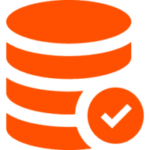Product releases follow an agile software development lifecycle and go through design, development, and QA testing approvals before deploying to production.
- Revenue Productivity Platform
Revenue Productivity Platform
One platform to enable customer-facing teams and execute on open deals.
Meet Copilot
Your generative AI productivity assistant
For Revenue Enablement
Sales Enablement & Training
Build rep knowledge and skills with practice and AI-assisted reinforcement.
Sales Content Management
Align content to skills, sales processes, and customer needs
Sales Coaching
Optimize performance and skill gaps with personalized coaching
Readiness Index™
Identify your Ideal Rep Profile™ and tie skills to sales success
Browse by Module
For Revenue Operations
Conversation Intelligence
Understand field performance during customer interactions
Sales Forecasting (RO&I)
Get complete visibility into your pipeline health and take actions that boost revenue.
Digital Sales Rooms
Collaborate with your buying teams on content and mutual action plans.
Analytics & Dashboards
Measure the progress of your team on knowledge, skills, and deal behaviors
Integrations
Learn how Mindtickle works seamlessly with your stack
Services
Mindtickle’s advisory, professional, and content services that ensure your programs succeed
Pre-Built Training
Launch enablement quickly with templates and ready-to-deploy programs
Content as a Service
Work with our in-house team of content experts to convert your content into engaging digital experiences
Explore Options
- Solutions
Sales Readiness Solutions
Focus on your team's sales training and coaching needs with comprehensive readiness solutions.
Sales Onboarding
Ramp new sales team members quickly with learning that sticks
Sales Training
Build knowledge with ongoing programs, missions and content
Manager-Led Coaching
Create a coaching culture with personalized tools
Account Strategy & Review
Leverage field evidence to inform your growth plans
By Use Case
Sales Kickoffs
Use kickoffs and live instructor-led sessions to drive skill development
Partner Enablement
Get your partners scaled quickly and keep them updated
Sales Certification
Ensure reps are ready to implement skills in the field
Voice of the Customer
Gain complete insight into customer expectations
Sales Enablement
Teach your teams, track and address skill gaps systematically
Sales Leadership
Set the true north for sales excellence
Frontline Managers
Know where your reps need skill development and coach them
Sales Ops
Report on data from enablement, content, and sales
By Role
- Customers
Our Customers
Explore how customers use Mindtickle to build best-in-class sales enablement programs.
Customer Stories
Read how other customers use Mindtickle to impact sales performance and productivity
Customer Video Testimonials
Hear firsthand from our customers
- Resources
Sales Readiness Resources
We're dedicated to sharing everything we've learned. Browse the best from the sales readiness experts at Mindtickle.
Resources Hub
Insights, guides reports, checklists, videos and more. Filter and browse our full arsenal of helpful resources
Blog
Expert sales content for today’s revenue organization
On-demand Webinars
Live and On-demand events you won’t want to miss
Events
Sales events you won’t want to miss
Product Tours
Take a self-guided tour of Mindtickle.
Revenue Hub
Virtual library for everything you need to lead a sales enablement strategy that ensures sellers meet and beat quota every quarter.
Ready or Not? Video Series
Bite-sized tip videos to get your team sales-ready.
Ready, Set, Sell: A Mindtickle Podcast
Ready, Set, Sell focuses on sales performance, productivity, and continuous training to create entire teams of high performers.
What is Revenue Productivity?
How it enhances sales performance by utilizing seller data, revenue analytics, sales enablement, and front-line sales coaching.
State of Sales Productivity Report
Learn how winning sales orgs run their teams.
Featured Resource
What’s your Revenue Enablement IQ?
Discover your revenue enablement IQ.
- Company
About Mindtickle
Meet Mindtickle. We’re a leading sales enablement company that thrives on creating impact for our customers.
Contact Us
Have a question? Connect with our team and get answers.
- Request A Demo















